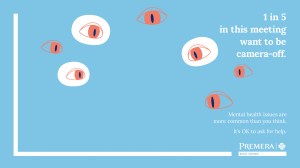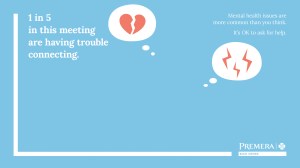Did you know that 1 in 5 adults in the U.S. struggle with their mental health? That means mental health concerns are more common than having blue eyes, being left-handed, or having naturally brown hair. You wouldn’t shy away from sharing that you are left-handed with your colleagues, would you? So why is it so difficult to talk about our mental health?
The National Alliance on Mental Illness (NAMI) defines stigma as someone viewing a person in a negative way because they have a mental health condition. Some people describe stigma as a feeling of shame or judgement from someone else. Stigma can also come from an internal place, confusing feeling bad with being bad. Stigma shames those who suffer into silence and prevents them from seeking care when they need it.
May is Mental Health Awareness Month. This month, be a part of shifting the narrative surrounding mental health in the workplace by creating a #StigmaFree space for you and your colleagues to have open conversations about mental health struggles.
Why is it important to create a #StigmaFree workplace for your employees?
The work environment has a huge impact on employees. It is imperative for the workplace to be mentally healthy and supportive. There are many benefits for companies that prioritize mental health including:
- Increased retention of valued employees
- Employees may be more inclined to take advantage of behavioral health services
- Increased productivity
- Decreased disability costs
- Decreased turnover
How can you help foster a #StigmaFree workplace during Mental Health Awareness Month and beyond?
- Take the #StigmaFree pledge: Make a pledge to your employees to create a culture of openness, acceptance, and understanding regarding mental health and overall well-being. To learn more about becoming a #StigmaFree company, visit the NAMI website.
- Talk about it: Download these special Microsoft Teams backgrounds and display them during meetings to demonstrate your workplace is a safe space for conversations about mental health.
- Offer support: Reserve a time during meetings to check in with your co-workers and be proactive about reaching out to those you believe might be struggling.
- Provide resources: Get to know the resources available to you through your health plan to help treat mental health conditions. Offer these resources to employees and their families to help understand and manage their behavioral health needs.
- Be patient: There isn’t a quick fix when it comes to treating a mental health condition. Be patient with those seeking care as it takes time to feel better.
If you know someone experiencing suicidal thoughts, call the National Suicide Prevention Lifeline at 800-273-TALK (8255) or contact the Crisis Text Line by texting HOME to 741741. Both offer free, 24/7 crisis support and resources.









